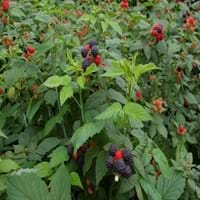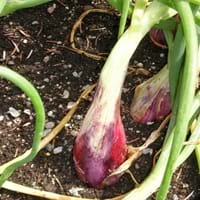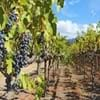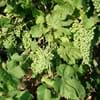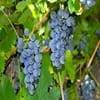Life Span
Perennial
Annual
Origin
Hybrid origin
Asia
Types
Rubus leucodermis, Rubus occidentalis, Rubus coreanus
Not Available
Habitat
Cold Regions
Not Available
USDA Hardiness Zone
5-8
4-8
Sunset Zone
Not Available
A1, A2, A3, H1, H2, 1a, 1b, 2a, 2b, 3a, 3b, 4, 5, 6, 7, 8, 9, 10, 11, 12, 13, 14, 15, 16, 17, 18, 19, 20, 21, 22, 23, 24
Habit
Arching/Fountain-shaped
Clump-Forming
Flower Color Modifier
Bicolor
Bicolor
Fruit Color
Black
Not Available
Leaf Color in Spring
Green
Green, Light Green
Leaf Color in Summer
Green
Green, Light Green, Chartreuse
Leaf Color in Fall
Green
Green, Yellow green
Leaf Color in Winter
Light Green
Not Available
Plant Season
Summer
Summer
Sunlight
Full Sun
Full Sun, Partial Sun
Type of Soil
Loam, Sand
Loam, Sand
The pH of Soil
Acidic, Neutral
Neutral
Soil Drainage
Well drained
Well drained
Bloom Time
Early Spring, Spring
Summer
Tolerances
Drought
Drought
Where to Plant?
Ground
Ground
How to Plant?
Cuttings, Root Division
Cuttings
Plant Maintenance
Medium
Medium
Watering Requirements
Medium
Average Water Needs
In Summer
Lots of watering
Lots of watering
In Spring
Moderate
Moderate
In Winter
Average Water
Average Water
Soil pH
Acidic, Neutral
Neutral
Soil Type
Loam, Sand
Loam, Sand
Soil Drainage Capacity
Well drained
Well drained
Sun Exposure
Full Sun
Full Sun, Partial Sun
Pruning
Prune in fall, Remove damaged leaves, Remove dead branches, Remove dead leaves, Remove dead or diseased plant parts
Remove damaged leaves, Remove dead branches, Remove dead leaves
Fertilizers
All-Purpose Liquid Fertilizer, Apply 10-10-10 amount
All-Purpose Liquid Fertilizer
Pests and Diseases
Red blotch
Red blotch
Plant Tolerance
Drought
Drought
Flower Petal Number
Single
Single
Fragrant Bark/Stem
No
Yes
Foliage Texture
Medium
Medium
Foliage Sheen
Matte
Matte
Attracts
Birds, Butterflies
Aphids, Beetles
Allergy
cramps, Diarrhea, Itchiness, Runny nose, Skin rash, sneezing, Swollen Lips, Tingly mouth, Vomiting, Watery eyes
Cold, Irritate the mucus membrane, Sinuses
Aesthetic Uses
Not Used For Aesthetic Purpose
Not Used For Aesthetic Purpose
Beauty Benefits
Good for skin
Not Available
Environmental Uses
Air purification, Food for birds, Food for insects, Nesting sites for birds, Shadow Tree, Windbreak
Air purification
Medicinal Uses
anti-cancer, Astringent, Diuretic, Febrifuge, Stomachic, Tonic
anti-inflammatory, Antiseptic, Antispasmodic, Hypotensive
Part of Plant Used
Bark, Fruits, Leaves
Flowers, Leaves, Root
Other Uses
Used As Food
Cosmetics, Used as a dye
Used As Indoor Plant
No
No
Used As Outdoor Plant
Yes
Yes
Garden Design
Edible, Fruit / Fruit Tree
Edible, Herb / Vegetable
Botanical Name
RUBUS 'Jewel'
ALLIUM cepa( Aggregatum Group)
Common Name
Black Raspberry
Scallion, Shallot
In Hindi
Black Raspberry Tree
Shallot
In German
Schwarze Himbeere Baum
Schalotte
In French
Noir Arbre Framboise
échalote
In Spanish
Negro del árbol de la frambuesa
chalote
In Greek
Μαύρο Raspberry Δέντρο
είδος κρεμμυδιού
In Portuguese
Árvore framboesa Preto
Sallot
In Polish
Czarny Raspberry Drzewo
Sallot
In Latin
Niger IDAEUS ligno
Sallot
Phylum
Magnoliophyta
Tracheophyta
Class
Magnoliopsida
Magnoliopsida
Order
Rosales
Asparagales
Family
Rosaceae
Liliaceae
Clade
Angiosperms, Eudicots, Rosids
Angiosperms, Monocots
Tribe
Not Available
Not Available
Subfamily
Rosoideae
Not Available
Number of Species
Not Available
Difference Between Black Raspberry and Shallot
If you are confused whether Black Raspberry or Shallot are same, here are some features about those plants to help you choose better. Many people think that these two plants have the same characteristics, but one can see Black Raspberry and Shallot Information and learn more about it. Fertilizers required for proper growth of Black Raspberry are All-Purpose Liquid Fertilizer and Apply 10-10-10 amount, whereas for Shallot fertilizers required are All-Purpose Liquid Fertilizer. Hence, one should know the basic difference between Black Raspberry and Shallot if you are planning to have them in your garden to enhance its beauty.
<
Flowering PlantsImportance of Black Raspberry and Shallot
Want to have the most appropriate plant for your garden? You might want to know the importance of Black Raspberry and Shallot. Basically, these two plants vary in many aspects. Compare Black Raspberry and Shallot as they differ in many characteristics such as their life, care, benefits, facts, etc. Every gardener must at least have the slightest clue about the plants he wants to plant in his garden. Compare their benefits, which differ in many ways like facts and uses. The medicinal use of Black Raspberry is anti-cancer, Astringent, Diuretic, Febrifuge, Stomachic and Tonic whereas of Shallot is anti-inflammatory, Antiseptic, Antispasmodic and Hypotensive. Black Raspberry has beauty benefits as follows: Good for skin while Shallot has beauty benefits as follows: Good for skin.
Compare Facts of Black Raspberry vs Shallot
How to choose the best garden plant for your garden depending upon its facts? Here garden plant comparison will help you to solve this query. Compare the facts of Black Raspberry vs Shallot and know which one to choose. As garden plants have benefits and other uses, allergy is also a major drawback of plants for some people. Allergic reactions of Black Raspberry are cramps, Diarrhea, Itchiness, Runny nose, Skin rash, sneezing, Swollen Lips, Tingly mouth, Vomiting and Watery eyes whereas of Shallot have Cold, Irritate the mucus membrane and Sinuses respectively. Having a fruit bearing plant in your garden can be a plus point of your garden. Black Raspberry has showy fruits and Shallot has no showy fruits. Also Black Raspberry is not flowering and Shallot is not flowering . You can compare Black Raspberry and Shallot facts and facts of other plants too.
